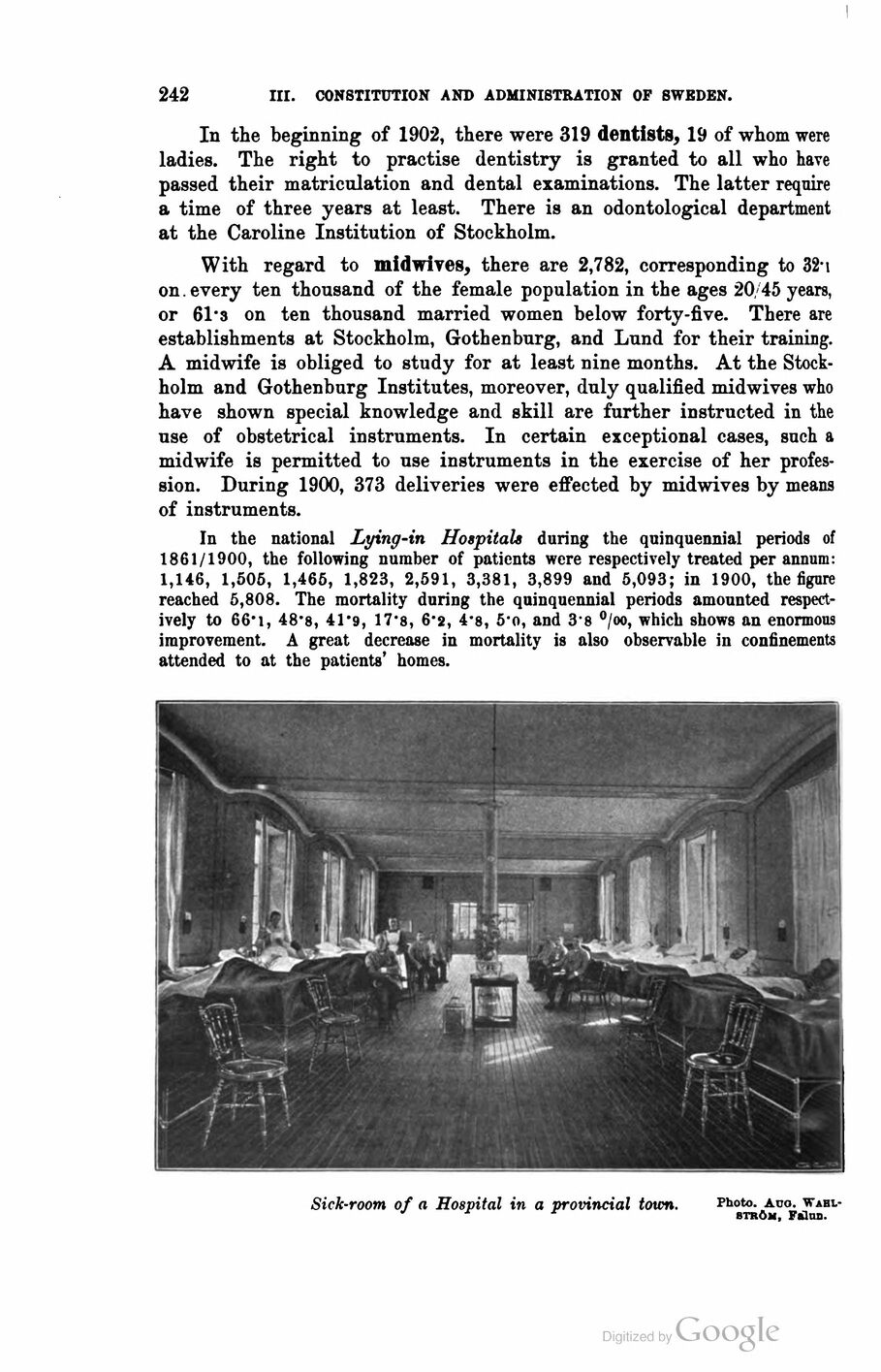
Full resolution (JPEG) - On this page / på denna sida - First part - III. Constitution and Administration - 2. State Administration - Hygiene and care of the sick, by C. Waller, M. D., Director of the Hålahult Sanatory, C. Runborg, M. D., Stockholm, and G. Schuldheis, M. D., Member of the Royal Medical Depart., Stockholm

<< prev. page << föreg. sida << >> nästa sida >> next page >>
Below is the raw OCR text
from the above scanned image.
Do you see an error? Proofread the page now!
Här nedan syns maskintolkade texten från faksimilbilden ovan.
Ser du något fel? Korrekturläs sidan nu!
This page has never been proofread. / Denna sida har aldrig korrekturlästs.
242
III. CONSTITUTION AND ADMINISTRATION OF SWEDEN.
In the beginning of 1902, there were 319 dentists, 19 of whom were
ladies. The right to practise dentistry is granted to all who have
passed their matriculation and dental examinations. The latter require
a time of three years at least. There is an odontological department
at the Caroline Institution of Stockholm.
With regard to midwiyes, there are 2,782, corresponding to 32-1
on. every ten thousand of the female population in the ages 20/45 years,
or 61-3 on ten thousand married women below forty-five. There are
establishments at Stockholm, Gothenburg, and Lund for their training.
A midwife is obliged to study for at least nine months. At the
Stockholm and Gothenburg Institutes, moreover, duly qualified midwives who
have shown special knowledge and skill are further instructed in the
use of obstetrical instruments. In certain exceptional cases, such a
midwife is permitted to use instruments in the exercise of her
profession. During 1900, 373 deliveries were effected by midwives by means
of instruments.
In the national Lying-in Hospitals during the quinquennial periods of
1861/1900, the following number of patients were respectively treated per annum:
1,146, 1,505, 1,465, 1,823, 2,591, 3,381, 3,899 and 5,093; in 1900, the figure
reached 5,808. The mortality during the quinquennial periods amounted
respectively to 66*1, 48*8, 41*9, 17*8, 6-2, 4-8, 5’0, and 3 s °/oo, which shows an enormous
improvement. A great decrease in mortality is also observable in confinements
attended to at the patients’ homes.
Sick-room of a Hospital in a provincial town. Photo, acq.
wahlström, f filan.
<< prev. page << föreg. sida << >> nästa sida >> next page >>